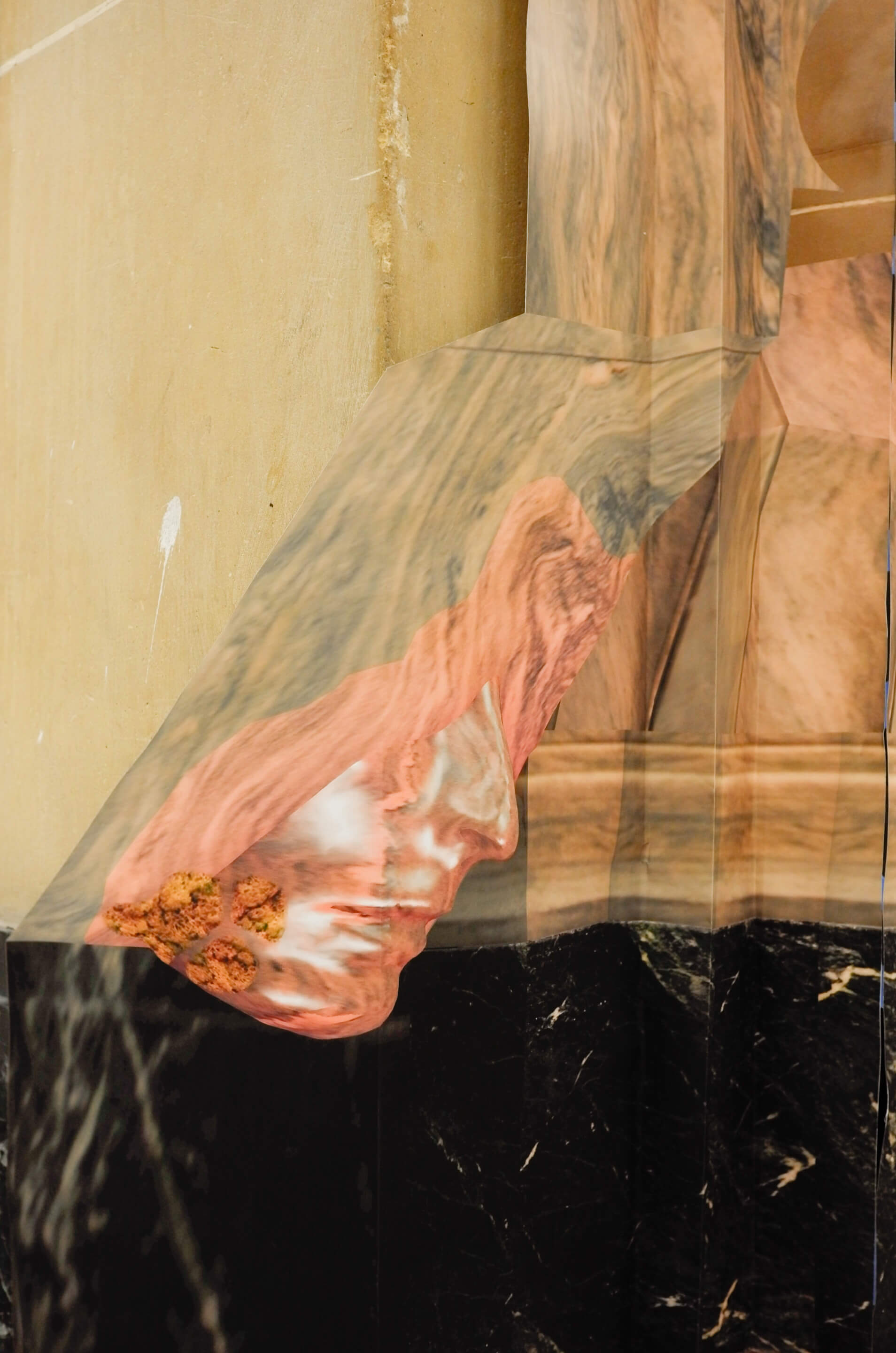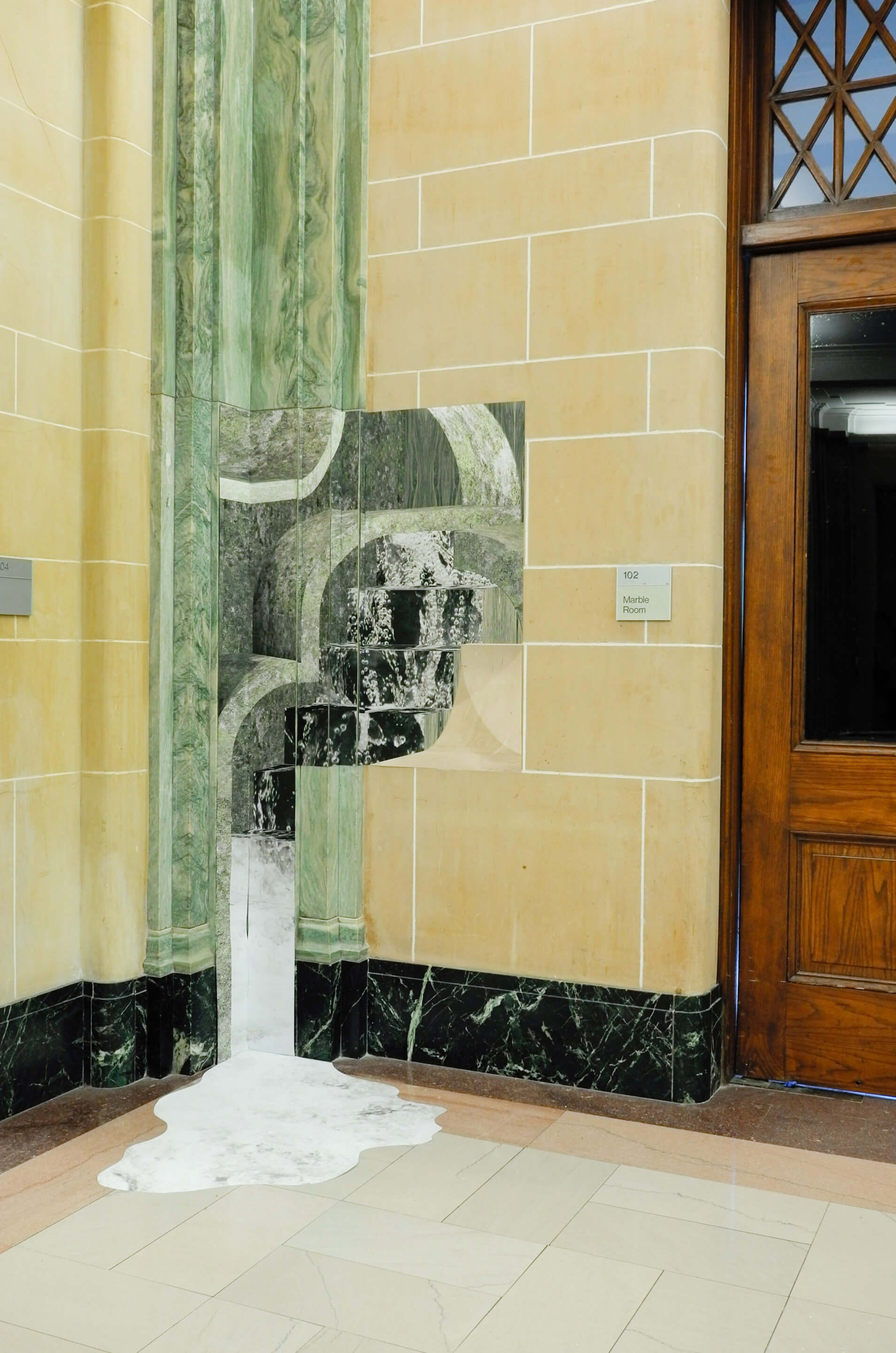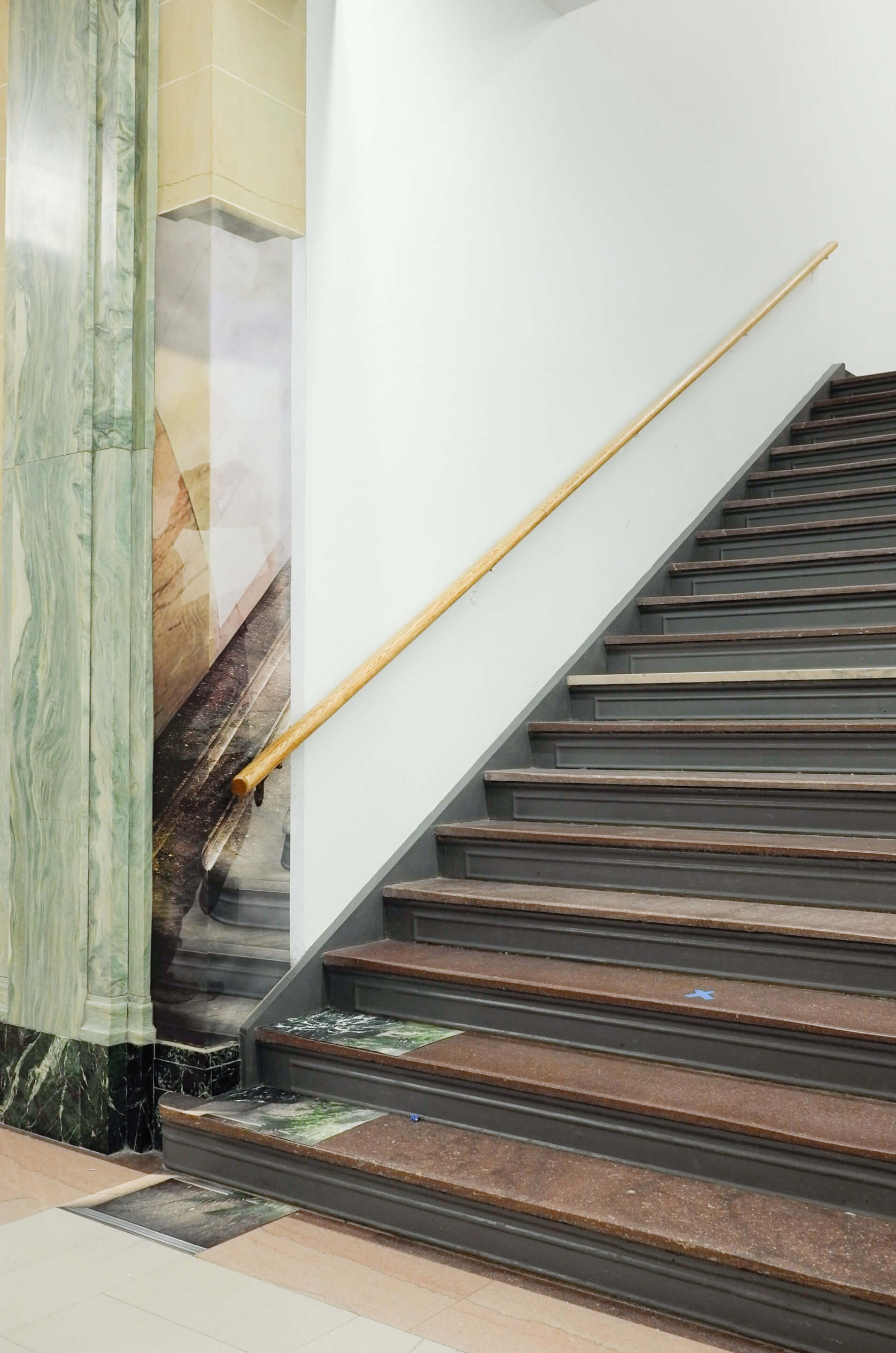Stephanie Lin, dean at The School of Architecture and founder of Present Forms and Office III, led Beyond the Surface from September 21 through October 3, 2021, a perspective-bending drawing workshop and one-day installation with students at the Syracuse University School of Architecture. Located in the atrium of Slocum Hall, the 1916 home of the architecture school at Syracuse, the workshop displayed work from students Daria Agapitova, Kristabel Chung, Ryo Ishioka, Tina Lim, Luis Lopez, Jerry Yan, and Helna Zhen. Composed of a series of “printed windows,” the installation mediated between a two-dimensional drawing exhibit and three-dimensional spatial installation.
Students selected their own particular corner conditions in Slocum Hall—where walls, stairs, floors, or columns meet—and imagined deeper or alternative architectures that take cues from the existing material palette of the building. Lin described the workshop as “an experiment in immersive media that involved the integration of physical and contextual specificities, examining the surface and ‘1:1’ scale of printed architectural representation as a site for exploring entanglements between the real and the imagined.”

Playing with anamorphic perspectives (Zhen), introducing new profiles and details (Lopez), imagining false staircases that lead to nowhere (Ishioka and Lim), and stone seemingly melting and pooling on the ground (Agapitova) were among the strategies students took in implying new spatial possibilities. These drawings were developed by mapping their chosen corners with high-resolution photography and building accurate photo-textured Rhino models. The design process then focused on creating, in Lin’s words, “an ambiguous spatial intervention…balancing working with 2D and 3D materials, unified through textural similarity, alignments between the ‘actual’ and virtual compositions, and perceived spatial continuities.” Several digital techniques were mixed across the project, from digital photography, photo-stitching, high-resolution texture-mapping, to anamorphic and perspectival projection within three-dimensional modeling environments.
Kyle Miller, associate professor at Syracuse Architecture, stressed the importance of the mixed-media workshop: “In working across photography, digital modeling, physical interventions, and video, Stephanie’s design workshop provided our students with an opportunity to not only participate in, but also contribute to conversations in architecture today surrounding visuality, image-making, and images as materials. As a result of students carefully capturing and recomposing the rich colors and textures of the site in which their interventions were situated, as well as expertly deploying advanced digital drawing and modeling techniques to produce anamorphic images, the projects were incredibly immersive and convincingly stitched to their surroundings.”

The success of the show is highly dependent on the technology that allows for a believable intervention on the existing condition. What makes the drawings of Lin’s students so compelling is how believable yet whimsical they are; upon examination, it’s clear that there are spatial implications of something deeper within the image that is, of course, inaccessible and imagined, but from afar, the edges between built and imaged “realities” are blurred and difficult to distinguish. This is due to the high-resolution documentation and printing technologies that ensured fidelity from the beginning of the process through the production of the final images.
The stone textures of the images are true to the physical stone within the original space—no small feat, especially for anyone who has tried to texture map an irregular and unique material such as stone. Any issues in resolution, fuzziness, the loss of accurate color, or even the immediate recognition of what is paper texture versus what is original stone could have rendered the result less effective, but, impressively, there are no such issues. The images are also the architecture.
In assessing the impact of the project, Lin explained that “the works explore the use of the image as a tool for building space, an exploration of immersive media through the blending of high res and analog, and an embrace of the multiple—in readings, translations and materialities.” Indeed, Beyond the Surface does blend multiple techniques, askewing the traditional separation of architectural representations and realities. At its most basic, architecture is typically divided into two media: representation (drawings, images, models) and reality (built building). In an “ever-evolving visual culture,” as Lin put it, where even built architecture is experienced more often as a series of images than it is in-situ, built reality, the divide between representation and reality (or generative tool and finished product) has been flattened. As such, drawings and images may become spatial in and of themselves, no longer resigned to the gallery or pin-up board that points to some other, more meaningful medium.

“It was gratifying, after so many months on zoom, to have Dean Lin work in person with our faculty and students,” said Michael Speaks, dean of Syracuse Architecture. “The results were impressive and will be part of an exhibition at Syracuse Architecture in spring 2022.” Beyond the Surface was the first of a number of invited drawing workshops and lectures at Syracuse this fall. Other planned workshops will be led by Perry Kulper, Nathan Williams, and Iman Fayyad.











